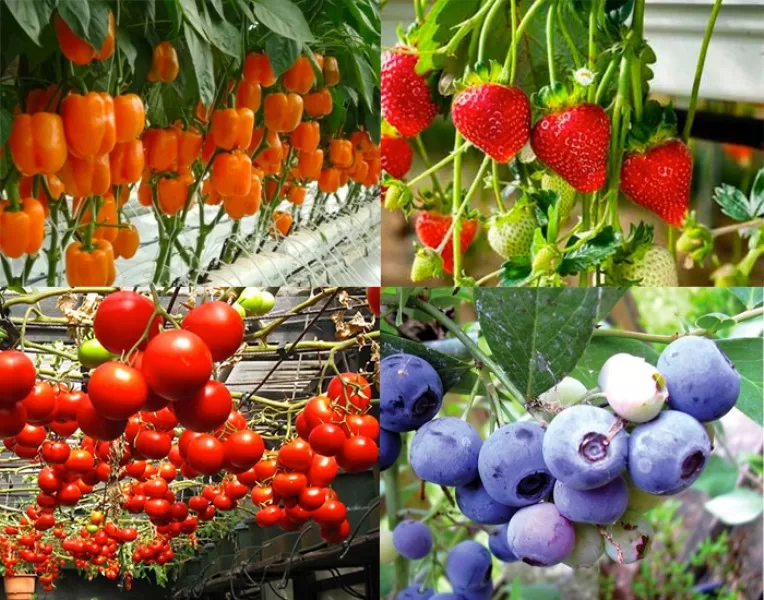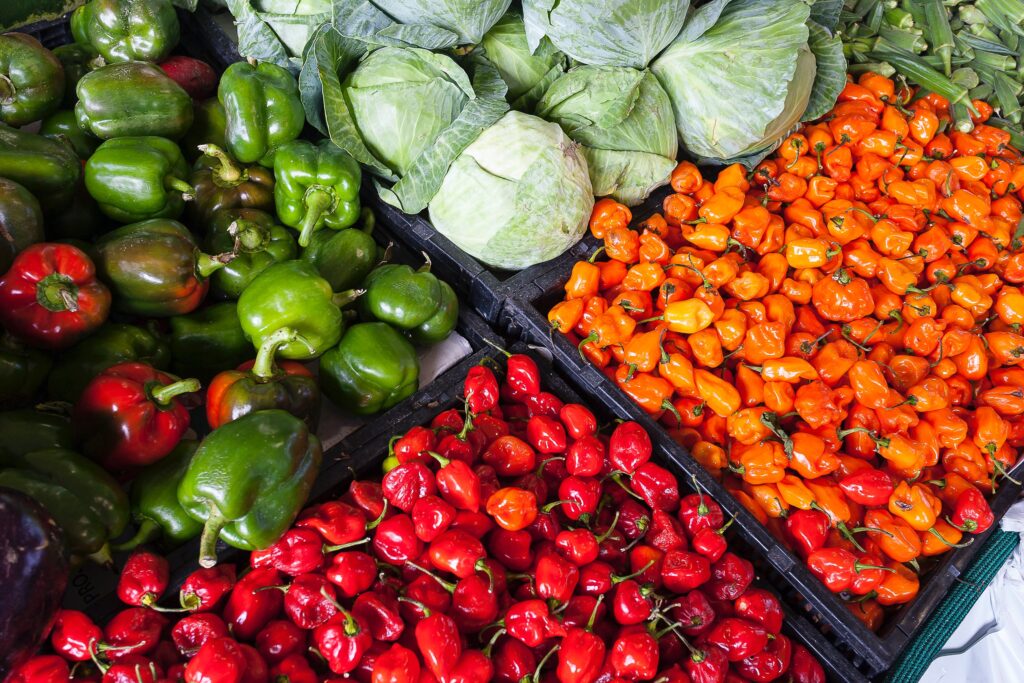In recent years, hydroponic vegetable farming has gained significant popularity as a sustainable and efficient method for cultivating nutrient-rich crops without soil. This innovative technique allows individuals to grow their own fresh vegetables in controlled environments, regardless of limited space or unfavorable outdoor conditions. In this comprehensive guide, we will explore the benefits of hydroponic vegetable farming and provide step-by-step instructions to help you set up your own system. By following these guidelines, you can embark on a rewarding journey of producing healthy and delicious vegetables right in your own home.
Introduction to Hydroponic Vegetable Farming
Hydroponic vegetable farming is revolutionizing the way we approach agriculture. By growing plants in a soil-less system, hydroponics offers numerous advantages over traditional methods. It allows for precise control over nutrient delivery, water usage, and environmental conditions, resulting in faster growth, higher yields, and superior crop quality. The absence of soil also eliminates the risk of soil-borne diseases and reduces the need for pesticides. As a result, hydroponic vegetable farming is not only environmentally friendly but also provides a sustainable solution to the challenges of food production.
Setting Up Your Hydroponic System
To embark on your hydroponic vegetable farming journey, the first step is to set up your own hydroponic system. There are various types of hydroponic systems available, including nutrient film technique (NFT), deep water culture (DWC), and ebb and flow systems. Each system has its own unique characteristics and requirements, so it’s important to choose one that suits your space, budget, and specific needs. A typical hydroponic system consists of containers, pumps, a growing medium, and nutrient solutions tailored to meet the specific needs of your chosen vegetables.
Choosing the Right Vegetables for Hydroponics
Not all vegetables are suitable for hydroponic farming. However, there is a wide range of vegetables that thrive in hydroponic systems. Lettuce, spinach, tomatoes, peppers, and herbs are among the popular choices for hydroponic vegetable crops. These vegetables are characterized by their compact size, fast growth, and high nutrient requirements, making them ideal candidates for this cultivation method. By selecting the right vegetables, you can maximize your chances of success and enjoy a bountiful harvest.

Nutrient Management and pH Balance
Proper nutrient management is crucial for the success of your hydroponic vegetable farm. Plants grown hydroponically rely on nutrient solutions to fulfill their nutritional needs. These solutions must be carefully balanced to provide the essential elements required for healthy plant growth. Monitoring and maintaining the pH level of the nutrient solution is equally important, as it affects the plants’ ability to absorb nutrients. Regular testing and adjustments ensure that your plants receive the optimal nutrient concentrations and pH ranges they need to thrive.
Lighting and Environmental Considerations
Lighting plays a vital role in hydroponic vegetable farming, as it serves as a substitute for natural sunlight. LED grow lights have become the preferred choice for indoor hydroponic systems due to their energy efficiency and ability to provide customized light spectrums that cater to specific plant growth stages. In addition to lighting, maintaining appropriate environmental conditions such as temperature, humidity, and air circulation is essential for healthy plant growth. Adequate ventilation and climate control systems help create an optimal growing environment for your vegetables.
Plant Propagation and Transplantation
Successful plant propagation is a critical step in hydroponic vegetable farming. Starting from seeds or seedlings, you need to ensure proper germination and transplant them into your hydroponic system. Seed germination techniques, such as pre-soaking or using germination media, can help improve success rates. Transplanting seedlings into your hydroponic setup requires careful handling to avoid damaging the delicate roots. Once transplanted, providing adequate support and care during the initial growth stages is essential for healthy plant development.
Nutrient Monitoring and Maintenance
Regular monitoring of nutrient levels and system maintenance are essential for a thriving hydroponic vegetable farm. Monitoring tools and testing kits can help you measure nutrient concentrations in the solution and detect any imbalances or deficiencies. Adjusting nutrient levels accordingly ensures that your plants receive the proper nutrition they need for optimal growth. Additionally, maintaining a clean and well-maintained root environment is crucial to prevent root diseases and promote healthy plant development.
Pests and Disease Management
While hydroponic systems reduce the risk of soil-borne diseases, pests can still pose a threat to your vegetable crops. Implementing preventive strategies and employing organic pest control methods are crucial for effective pest management in hydroponics. Techniques like introducing beneficial insects or using sticky traps can help control pests without the use of harmful chemicals. Integrated pest management (IPM) practices, including regular monitoring, early detection, and prompt action, are key to maintaining healthy plants and preventing infestations.

Maximizing Yield and Harvesting
To maximize the yield of your hydroponic vegetable farm, certain practices can be employed. Pruning, trellising, and proper spacing help optimize plant growth, increase air circulation, and prevent overcrowding. These techniques not only enhance yield but also facilitate easier plant maintenance and disease prevention. Understanding the visual indicators of readiness for harvesting different vegetables is essential to ensure peak flavor and nutrition. Proper post-harvest handling and storage techniques maintain the quality and freshness of your harvested vegetables.
Success Stories and Tips from Experienced Growers
Drawing inspiration from successful hydroponic vegetable farmers can provide valuable insights and guidance. Learning from their experiences, innovative approaches, and best practices can help you overcome challenges and achieve exceptional results. These success stories serve as a testament to the potential of hydroponic vegetable farming and inspire others to embark on their own journey.
Hydroponic vegetable farming offers an exciting and rewarding way to grow your own nutrient-rich crops at home. By setting up a well-designed hydroponic system, selecting the right vegetables, managing nutrients and environmental conditions, and implementing effective pest and disease management strategies, you can enjoy a bountiful harvest of fresh and healthy vegetables throughout the year. Embrace the potential of hydroponic vegetable farming, and unlock a sustainable and efficient method of food production that empowers individuals to take control of their own food supply.
Remember to always tailor your hydroponic system and cultivation practices to the specific needs of your chosen vegetables, and never hesitate to experiment and adapt your approach based on your own observations and experiences. Start your hydroponic vegetable farming journey today and savor the joy of growing your own nutritious and delicious vegetables, right in the comfort of your home.
Here are some common questions and concerns that you may have about hydroponic vegetable farming, along with concise and informative answers:
Is hydroponic vegetable farming difficult to set up?
Setting up a hydroponic system may seem daunting at first, but with proper guidance and basic knowledge, it can be relatively straightforward. There are various resources available, including online tutorials and community forums, that can provide step-by-step instructions and support.
How much space is needed for hydroponic vegetable farming?
Hydroponic systems are highly adaptable and can be designed to fit various spaces. Even a small area, such as a balcony or indoor room, can be used for hydroponic vegetable farming. Vertical systems, such as vertical towers or stacked shelves, can maximize space utilization and allow for higher plant densities.

What types of vegetables can be grown hydroponically?
A wide range of vegetables can be successfully grown hydroponically, including leafy greens (lettuce, spinach, kale), tomatoes, cucumbers, peppers, herbs, and even some root vegetables like radishes and carrots. These vegetables are well-suited for hydroponics due to their compact size, fast growth, and high nutrient requirements.
Are hydroponic vegetables as nutritious as soil-grown vegetables?
Yes, hydroponically grown vegetables can be just as nutritious, if not more so, than soil-grown vegetables. Hydroponic systems allow for precise control of nutrient solutions, ensuring that plants receive the ideal balance of essential nutrients. This controlled environment can lead to healthier and more nutrient-dense vegetables.
What are the main advantages of hydroponic vegetable farming?
Hydroponic vegetable farming offers several advantages over traditional soil-based cultivation. It requires less water, as the nutrient solution is recirculated and can be reused. It also eliminates the need for pesticides and herbicides, resulting in cleaner and safer produce. Additionally, hydroponics allows for year-round cultivation, regardless of seasonal limitations.
How often should nutrient solutions be changed?
Nutrient solutions in hydroponic systems should be monitored regularly, and their concentration and pH levels adjusted as needed. It is generally recommended to change the nutrient solution every two to three weeks to ensure a fresh supply of nutrients for the plants. However, this can vary depending on the specific crop, growth stage, and system design.
What are common pests and diseases in hydroponic vegetable farming?
Although hydroponic systems can reduce the risk of soil-borne pests and diseases, growers may still encounter challenges. Common pests include aphids, whiteflies, and spider mites. Preventive measures such as maintaining a clean growing environment and implementing integrated pest management (IPM) strategies can help minimize these issues.

How can I maximize the yield in hydroponic vegetable farming?
To maximize yield, proper plant spacing, pruning, and trellising techniques should be employed. This helps to optimize light penetration and air circulation, leading to healthier plants and higher productivity. Additionally, regular monitoring of nutrient levels, pH balance, and environmental conditions can contribute to optimal plant growth and yield.
Water Efficiency: One significant advantage of hydroponic vegetable farming is its water efficiency. Compared to traditional soil-based farming, hydroponics uses approximately 90% less water. This is because the nutrient solution in hydroponic systems is recirculated, reducing water waste. This efficiency is particularly beneficial in regions with limited water resources or in areas prone to drought.
Controlled Environment: Hydroponic systems provide growers with the ability to create a controlled environment for their vegetable crops. This means that factors such as temperature, humidity, and lighting can be carefully regulated to optimize plant growth. With the ability to control these variables, hydroponic farmers can achieve consistent and predictable crop yields throughout the year, regardless of external weather conditions.
Vertical Farming: Vertical farming is a technique often used in hydroponics that maximizes space utilization. It involves growing plants in stacked layers or vertical towers, allowing for higher plant densities. Vertical farming is especially beneficial for urban areas or locations with limited available land. It enables farmers to produce a significant quantity of vegetables in a smaller footprint.
Nutrient Film Technique (NFT): The Nutrient Film Technique (NFT) is a popular hydroponic system that involves a shallow nutrient solution flowing continuously over the roots of plants. This system ensures a constant supply of water and nutrients while allowing the roots to access oxygen. The NFT system is known for its efficiency in nutrient absorption, reduced water usage, and excellent oxygenation of the roots.
pH Balance: Maintaining the proper pH balance in a hydroponic system is crucial for nutrient uptake and plant health. Most vegetable crops thrive in a slightly acidic to neutral pH range, typically between 5.5 and 6.5. Regular monitoring and adjustment of pH levels are essential to ensure that plants can effectively absorb nutrients from the solution. pH testing kits or digital pH meters are commonly used tools for maintaining optimal pH levels.
Plant Support and Training: To promote healthy growth and maximize yield, providing proper support and training to plants is important. Techniques such as trellising, stringing, or using plant clips help support the weight of plants and encourage upward growth. These methods improve light penetration, airflow, and reduce the risk of diseases caused by plant crowding.
Nutrient Solutions and Micronutrients: Hydroponic vegetable crops require specific nutrient solutions that provide all the necessary macro and micronutrients. Macronutrients, such as nitrogen, phosphorus, and potassium, are required in larger quantities, while micronutrients like iron, manganese, and zinc are needed in smaller amounts. It is crucial to monitor and adjust the nutrient solution regularly to maintain the appropriate nutrient concentrations for optimal plant growth.
Continuous Improvement: Hydroponic vegetable farming is a dynamic field with ongoing research and technological advancements. As a grower, it is important to stay updated with the latest innovations, best practices, and new varieties of crops suited for hydroponics. Networking with other growers, attending workshops or conferences, and engaging in online communities can provide valuable insights and opportunities for continuous improvement.






